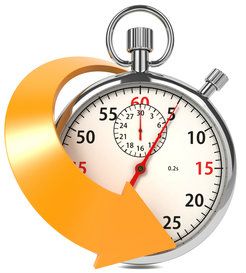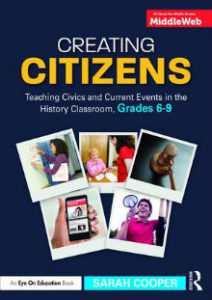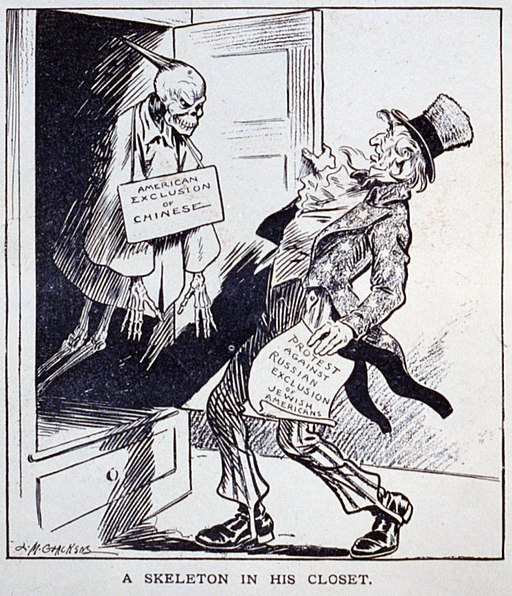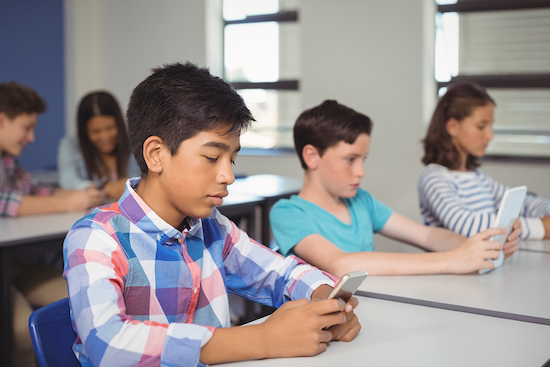Add 5 Minutes of Current Events into History Class
A MiddleWeb Blog
 Four years ago, I made a huge shift in daily classroom practice: I started talking about current events just about every day in my eighth-grade U.S. history classroom.
Four years ago, I made a huge shift in daily classroom practice: I started talking about current events just about every day in my eighth-grade U.S. history classroom.
I procrastinated making the change because I was more than a little concerned about covering the history curriculum. But I felt I wasn’t doing my job as a social studies teacher if students didn’t know what was happening in the world around them.
This feeling has grown even more urgent in the past couple of years – even the past couple of months – with student activism splashing onto the front pages of papers across the country.
Ultimately, moving current events front and center has been one of the most influential paradigm shifts in my eighteen years of teaching.
So how did I do it? How can we all do it? Here are three approaches I’ve tried that make fitting in current events painless.
-
Take just five minutes a day – really!

-
Accept that these daily news bits will be more teacher-directed.
In my ideal world, my classes would be almost entirely student-centered. And on Fridays, when students lead the class by presenting current events, we head toward a truly democratic classroom. However, for these daily five minutes at the beginning of class, I often become the expert curating the world for students.
That said, a good ten or twenty percent of my middle schoolers follow the news on their own, or as a result of their parents’ encouragement (or arm twisting).
And a majority follow trending news on their social media, so some days everyone knows what’s happening. When there’s general awareness about an issue, I’ll ask a student to summarize the story before I go into detail about nuances they might not have understood.
-
Have faith that current events will apply to historical themes.
One eighth grader in my class wrote in an anonymous online survey, “I really appreciate the current events we study because I believe that it is important for us to be aware, and knowing about the current events is helpful when we study government and history because these explain why certain events today happen, and why certain things are set up the way they are. It helps us build ties.”
And another said: “I think that current events are always helpful. They always apply to the material we are learning, and I can always think back on the article/video we watched/read.”
Absolutely. Discussing the news “helps us build ties” with what has come before, both in understanding themes across time and in applying cause-and-effect relationships to history. Consider one example:
If we pick apart the actions of the U.N. Security Council today, it is hard not to mention that the group’s five permanent member countries happen to be the victors of World War II. Or that Eleanor Roosevelt stood on an international stage as the head of the U.N.’s Human Rights Commission. Or even that the founding of the United Nations followed World War II, just as the founding of its precursor, the League of Nations, followed World War I.
All of these facts can be embedded into a ten-minute discussion about the potential U.N. reaction to North Korea’s latest nuclear proclamation, or they could even pave the way into a 20-minute small-group analysis of excerpts from the 1948 United Nations Declaration of Human Rights.
Making the Leap
What finally convinced me to give up the class time each day was realizing that we, as social studies teachers, are often the only adults in students’ lives talking about the news with them. It’s likely that no one else will do it if we don’t. If the news is the first draft of history, how can we ignore it?
Here’s one more anonymous student comment: “I liked the daily current events that occurred at the beginning of class each day because this brought new topics into the class. Current events showed me how there are so many things that are happening around me without even knowing.”
Do we want our students “knowing” or not knowing? Aware or unaware? Informed or ignorant? Part of the national conversation, or isolated in their daily lives?
We know what we want: young adults who will grow up to be active, literate citizens. It starts day by day, in our classrooms, as we open up the world and ask our students to step into it with us.
Further reading at MiddleWeb:
Helping Students Discover How the World Works
Let Your Students Curate Current Events Articles
Ideas to Blend History and Current Events
The News Stories My Students Want to Read
_________________________________________





































Sarah, This is such an important post. I love your quote: “We, as teachers are often the only adults in students’ lives talking about the news with them.” So true! To ensure we are raising informed and knowledgeable citizens, I believe all teachers must consider including current events in their curriculum. That 5 min. has potential for a huge payoff, as your students noted. With admiration, Regie
Regie, thank you so much for your kind words. I’m a little sorry it’s summer right now because there is so much I want to discuss with my students!
What a fabulous article! I also believe in the power of current events. Discussing current events helps students make connections to standards. It often leads them to their own conclusion to the question “Why is this important to me?”. Thank you for highlighting a very important part of a history classroom!
Thanks for reading, Sonja! I love your framing the question as “why is this important to me?” How are you able to incorporate current events in your classroom?
Sarah,
I teach 7th graders the regions of Southeast Asia, Southwest Asia and Africa. I allow students to lead discussions as events occur by framing warm-up questions that are related to current events. I am also intentional with leading and facilitating discussions related to standards and current events. I have found that the conversations often lead students to deeper discussions and understanding of the world around them. One activity I sometimes use to wrap it up is a 10 or 20 summary. Students love coming into class each day with a new event to discuss. I believe it raises awareness and interest too!